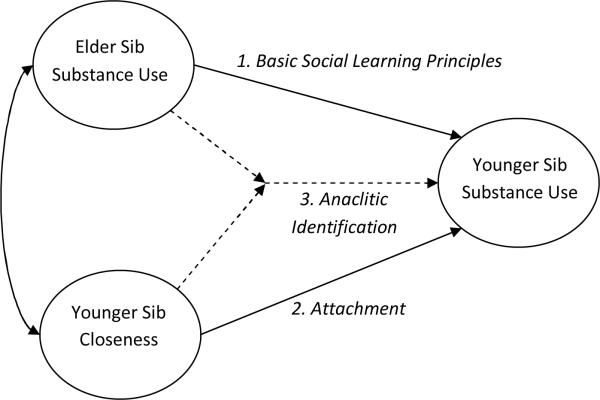Figure 1.
Conceptual model depicting study hypotheses. Moderating effects of sibling age difference, gender composition, and genetic similarity are not shown for clarity of presenting the theoretical hypotheses. As described in Path 1, basic social learning expectations predict a direct, positive association between elder sibling substance use and younger sibling substance use, particularly for siblings that are close in age, the same gender, and are genetically related. As described in Path 2, an attachment hypothesis (based in social bonding theory) predicts a direct, negative association between younger sibling perceived closeness towards his or her elder sibling and younger sibling substance use. As described in Path 3, an anaclitic identification hypothesis (based in social learning theory) predicts a moderating association between elder and younger substance use based on the younger sibling's perceived closeness towards his or her elder sibling.

